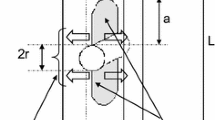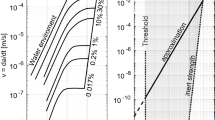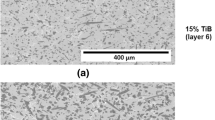Abstract
Crack propagation mechanisms in a lithium-aluminium-silicate glass-ceramic have been studied as a function of both initial flaw size and temperature. Using controlled surface cracks, the fracture stress at room temperature was found to conform to the Griffith flaw size dependence. Extrapolation suggests that processing flaws of the order of 6 to 8 μm are strength-controlling in the material investigated. Two mechanistic regimes were manifest in the temperature dependence of the fracture stress. Up to 900° C, catastrophic transgranular crack propagation occurred from emplaced cracks. At 1000° C and above, subcritical crack growth occurred intergranularly and the extent of slow crack growth prior to catastrophic failure increased with increasing temperature. The influence of loading rate on slow crack growth and fracture stress was explored at 950 and 1100° C. Generally, the extent of slow crack growth decreased with increased loading rate until at a sufficiently high rate, catastrophic fracture occurred directly with no slow crack extension. These results are discussed in terms of the role of plastic accommodation in the crack extension process, a phenomenon which seems mechanistically dependent upon remnant amorphous (uncrystallized) phase at grain boundaries.
Similar content being viewed by others
References
P. Kenny, Powder Met. 14 (1971) 22.
N. Ingelstrom and H. Nordberg, Eng. Fract. Mech. 6 (1974) 597.
K. R. Kinsman, M. Yessik, P. Beardmore and R. K. Govila, Metallography 8 (1975) 351.
K. R. Kinsman, R. K. Govila and P. Beardmore, “Deformation of Ceramic Materials”, edited by R. C. Bradt and R. E. Tressler (Plenum Press, New York, 1975) p. 465.
J. J. Petrovic, L. A. Jacobson, P. K. Talty and A. K. Vasudevan, J. Amer. Ceram. Soc. 58 (1975) 113.
A. A. Griffith, Phil. Trans. Roy. Soc. 221 (1920) 163.
R. C. Shah and A. S. Kobayashi, “The Surface Crack: Physical Problems and Computational Solutions”, edited by J. L. Swedlow (ASME, New York, 1972) p. 79.
W. A. Fate, Private Communication, Ford Motor Company, Research Staff (1974).
J. J. Petrovic, R. A. Dirks, L. A. Jacobson and M. G. Mendiratta, J. Amer. Ceram. Soc. 59 (1976) 177.
M. V. Swain, J. Mater. Sci. 11 (1976) 2345.
R. K. Govila and K. R. Kinsman, Amer. Ceram. Soc. Bull. 57 (1978) 316.
Author information
Authors and Affiliations
Rights and permissions
About this article
Cite this article
Govila, R.K., Kinsman, K.R. & Beardmore, P. Fracture phenomenology of a lithium-aluminium-silicate glass-ceramic. J Mater Sci 13, 2081–2091 (1978). https://doi.org/10.1007/BF00541661
Received:
Accepted:
Issue Date:
DOI: https://doi.org/10.1007/BF00541661




